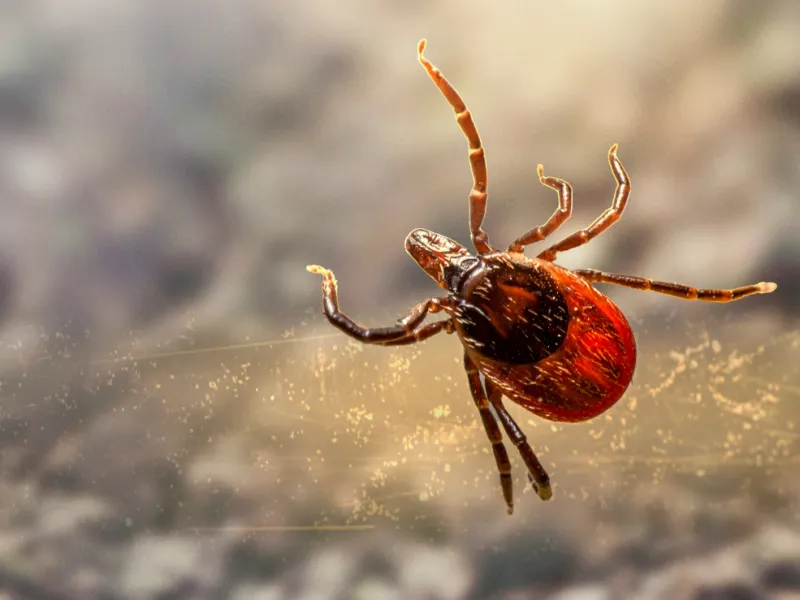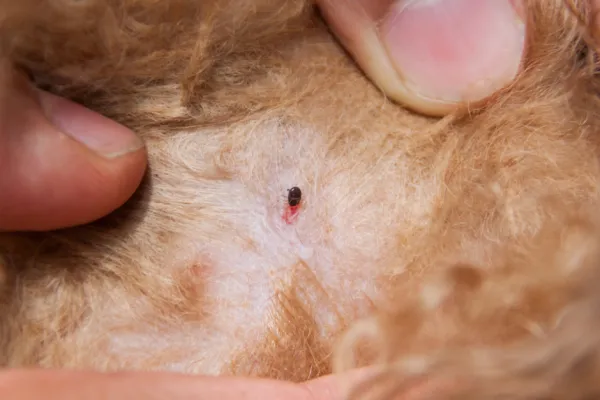Myths and Facts About Ticks

Ten Common Tick Myths
Ticks are a significant concern in the Maryland, Virginia, and D.C. areas due to their potential to transmit diseases such as Lyme disease. However, many myths and misconceptions surround these tiny arachnids. Let's dive into some of the most common myths about ticks and uncover the facts to help you stay informed and protected.
Myth 1: Ticks Only Live in Rural Areas
Fact: Ticks can be found in both rural and urban environments. While commonly associated with wooded and grassy areas, ticks can thrive in city parks, gardens, and suburban backyards. It's essential to take precautions regardless of your location.
Myth 2: Ticks Fall From Trees
Fact: Ticks do not fall from trees. They typically reside in tall grass, shrubs, and low vegetation, waiting for a host to brush past them. Ticks use a behavior called "questing," where they climb to the tips of grass or leaves and latch onto a passing host.
Myth 3: You Can Feel a Tick Bite
Fact: Most people do not feel a tick bite. Ticks secrete a small amount of anesthetic in their saliva, which numbs the area and makes the bite painless. This is why performing regular tick checks after spending time outdoors is essential.
Myth 4: Ticks Are Active Only in the Summer
Fact: While ticks are most active during warmer months, they can be active year-round in the DMV area. Adult ticks can be active even in winter if temperatures are above freezing.
Myth 5: All Ticks Transmit Lyme Disease
Fact: Not all ticks transmit Lyme disease. In the Maryland, Virginia, and D.C. areas, the primary vector for Lyme disease is the black-legged tick (also known as the deer tick). We have other ticks, such as the American dog tick and lone star tick, which do not transmit Lyme disease but can carry other pathogens.
Myth 6: Ticks Can Be Removed Safely With Nail Polish or Vaseline
Fact: Using nail polish, Vaseline, or other substances to remove ticks is not recommended. These methods can cause the tick to regurgitate its stomach contents into the wound, increasing the risk of infection. The best way to remove a tick is to use fine-tipped tweezers to grasp it as close to the skin as possible and gently pull it out.
Myth 7: Once You Find a Tick, The Risk of Disease Transmission Is Immediate
Fact: The risk of disease transmission increases the longer a tick is attached. For Lyme disease, the tick must be attached for 36-48 hours before the bacteria can be transmitted. Prompt and proper tick removal can significantly reduce the risk of infection.
Myth 8: Ticks Only Bite Humans
Fact: Ticks are not picky eaters and will feed on various hosts, including mammals, birds, reptiles, and amphibians. Pets, especially dogs, are also at risk of tick bites and can bring ticks into the home. Regular tick prevention measures for pets are crucial.
Myth 9: Tick Bites Are Always Obvious
Fact: Tick bites can often go unnoticed, especially if the tick is in a less visible area of the body. The bite site may not always become red or swollen. This is why it's essential to perform thorough tick checks after spending time outdoors, focusing on hidden areas like the scalp, behind the ears, and underarms.
Myth 10: Ticks Can Jump or Fly
Fact: Ticks cannot jump or fly. They rely on direct contact with a host to attach themselves. They typically wait on vegetation and latch onto animals or humans as they pass by.
Understanding ticks can help you better protect yourself, your family, and your pets from these persistent pests. Regular tick checks, proper removal techniques, and preventive measures are crucial in reducing the risk of tick-borne diseases. Stay informed and vigilant, especially in Maryland, Virginia, and D.C., where ticks are prevalent.
By debunking these myths, we aim to provide a clearer picture of tick behavior and the importance of effective tick prevention. Stay safe, stay protected, and enjoy the outdoors with peace of mind.


